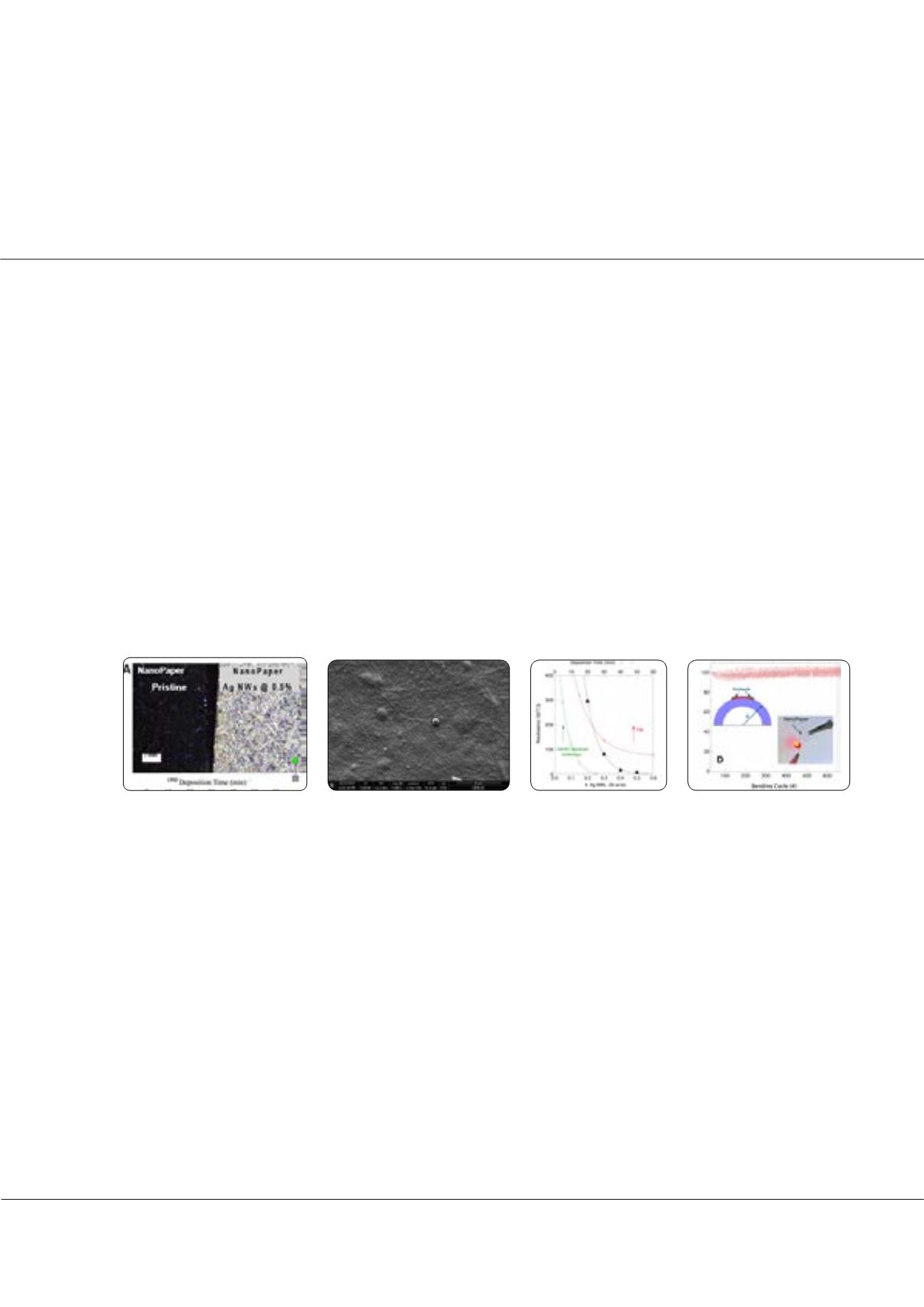

Page 43
conferenceseries
.com
Volume 6
Research & Reviews: Journal of Material Sciences
ISSN: 2321-6212
Materials Physics 2018
August 16-17, 2018
August 16-17, 2018 | London, UK
4
th
International Conference on
Condensed Matter and Materials Physics
Micro texturing tin and Ag coating for flexible and transparent electronics
Loik Gence
1
, P Saikia
1
, H Bhuyan
1
, C Castillo Urra
2
, F Quero
2
and
Hirotaka Koga
3
1
Pontifical Catholic University of Chile, Chile
2
University of Chile, Chile
3
The Institute of Scientific and Industrial Research - Osaka University, Japan
S
ince a few years, the semiconductor industry is looking for answering to the growing demand for new electronic devices
with the ability to be (inter-) connected for sharing informations with people and other devices within the framework of
the so-called Internet of Everything (IoE). This demand will explode in the next few years, and will require the development
of new materials and technologies that are lighter, flexible, low-power and that can be integrated in wearable devices, sensors,
displays and actuators. Polymer substrates, were recently proposed as a potential candidates for light-weight, flexible and
greener electronic devices. Here we studied the fabrication of conductive nanocellulose (nanopaper) substrates for flexible
solar cell and electronic devices applications. Sputtered titanium nitride (TiN) were deposited onto nanopaper substrates
using radio frequency capacitively coupled plasma (RFCCP). Their electrical and optical properties were scrutinized as a
function of substrate synthesis and TiN deposition parameters. Micro-texturing of the TiN coating is proposed for optimizing
their electro-optical properties. The electrical and optical TiN properties were compared with commercially available PET/
ITO substrates and Ag Nanowires (NWs) coatings already proposed as electrodes for nanopaper-based electronics. Moreover,
the conductivities of ITO, Ag NWs and TiN electrodes were scrutinized under repetitive mechanical stress, using a bending
machine.
Figure 1:
Optical view of (A) Nanopaper substrate before and after the deposition of Ag Nws. B) Sem image of a tin coating sputtered onto nanopaper. (C) Square
resistance of nanopaper and PET substrates as function of Ag NWs density and TiN deposition time. (D) Square resistance of a TiN coated nanopaper after 650
mechanical bending. The inset show the bending principle.
Recent Publications
1. International Technology Roadmap for Semiconductors Edition 2.0 (2015)
2. H Zhu et al. (2016) Wood derived materials for green electronics, biological devices, and energy applications Chem. Rev.
116:9305-9374.
3. M Nogi et al. (2015) Transparent conductive nanofiber paper for foldable solar cells. Scientific Reports. 5:17254.
4. U Celano et al. (2016) All-nanocellulose nonvolatile resistive memory. NPG Asia Materials. 8:e310.
5. C L Kim et al. (2017) A highly flexible transparent conductive electrode based on nanomaterials. NPG Asia Materials.
9:e438.
Biography
Loïk Gence is received his PhD from Catholic University of Louvain, Belgiuma and he is presently Assistant Professor in Instituto de Física of Pontificia Universidad
Catolica de Chile, Chile.
Loik.Gence@fis.uc.clLoik Gence et al., Res. Rev. J Mat. Sci. 2018, Volume 6
DOI: 10.4172/2321-6212-C2-017
















